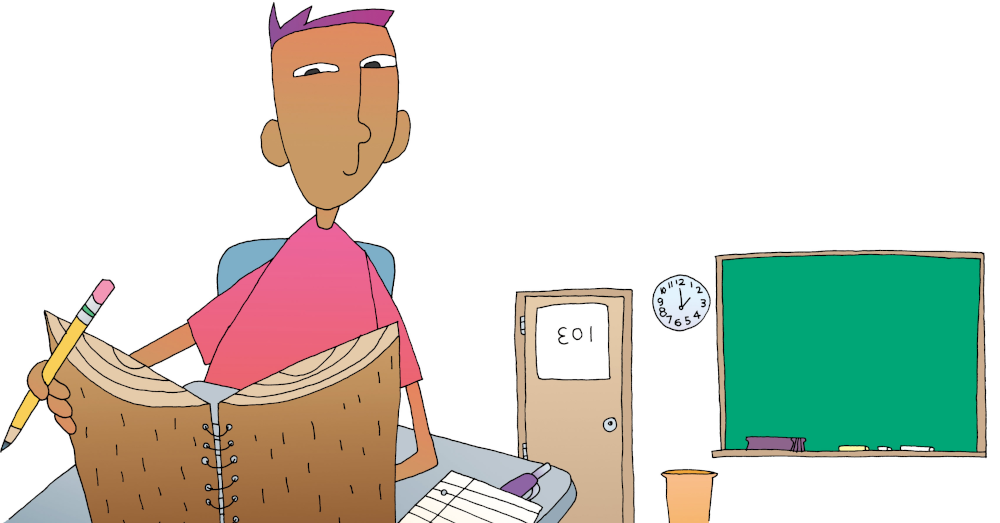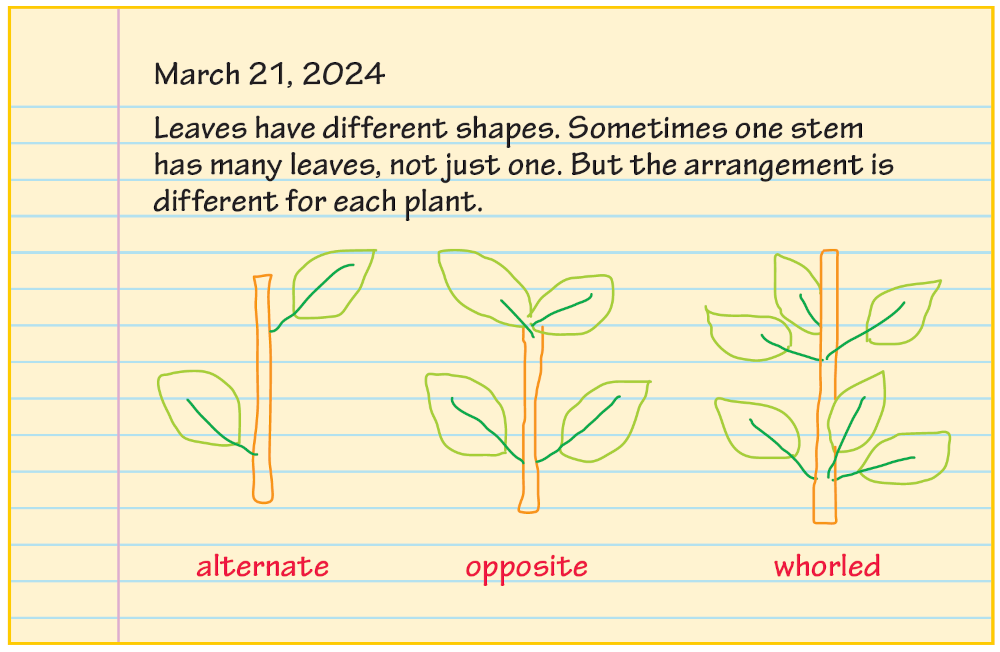Page 121
Using Learning Logs
Have you heard the ancient expression “I hear and I forget. I see and I remember. I do and I understand”?
That’s true because learning is best if it involves not only your ears and eyes but also your hands and brain.
A learning log lets your hands and brain do something with what you are learning. You write down your ideas and questions, try little thought experiments, wonder, and remember. Writing in a learning log can supercharge your learning in any class, and help you understand!
What’s Ahead

WE 122
Page 122
Keeping a Learning Log
You can write about any of your subjects in a learning log. Here are just a few ideas:
- Write about the most important idea you learned from a reading assignment.
- Write about questions you have or things you want to know.
- Write about what you learned from a class project or experiment.
- Write about your feelings about something you just learned.
Making a Learning Log
- Divide a notebook into sections. Create one section for each subject you will write about. Or create a learning log folder on your computer with a separate document for each class.
- Plan a time to write in your learning log each day. Write for a longer time about a subject that is difficult for you.
- Write freely and use your own words. Start by writing the date. Then put all your thoughts down. Write without stopping for at least 3 to 5 minutes.
April 22, 2024
Today we started a unit on the human body, and we looked at all the organs. Obviously, I knew about the heart and lungs and stomach, but there were weird things like the pancreas and the spleen. And the small intestine just wiggles and wiggles around. I don’t know how food ever gets through all that. And the large intestine—like a big upside-down horseshoe. That doesn’t seem right. How does the food go up? Then there’s things like the appendix and gall bladder that mostly you don’t hear about until they go bad. I know I have all these organs, but I’m not sure I like it. . . .
WE 123
Page 123
Learning-Log Activities
First Thoughts 🟪 List your first impressions about something you are reading or studying. You can also make a list of key words that come to mind after a lesson. Key words help you focus on the most important ideas.
Stop ’n’ Write 🟪 When you are studying something, stop and write about it. This helps you summarize along the way and keeps you on track.
Nutshelling 🟪 Do you know the phrase “in a nutshell”? It means “to say a lot in a few words.” A nutshell is a kind of summary. Try it yourself. In one sentence, write the most important idea you heard in class or read in an assignment. (Try nutshelling.)
Unsent Letters 🟪 Pretend you are sending a letter to a friend, a relative, or an author. In your letter, tell what you have learned about a topic or an idea. Explaining will help you to understand the subject better.
Graphic Organizers 🟪 Use a graphic organizer to think about a lesson. A cluster or web works well for gathering facts. A 5-senses chart will help you describe a topic, and a Venn diagram lets you compare two things. (See pages 383–386.)
Drawing 🟪 Draw pictures to show what you have learned or are thinking about—anything from diagrams to maps to doodles.
WE 124
Page 124
Sample Math Log

Sample Science Log
